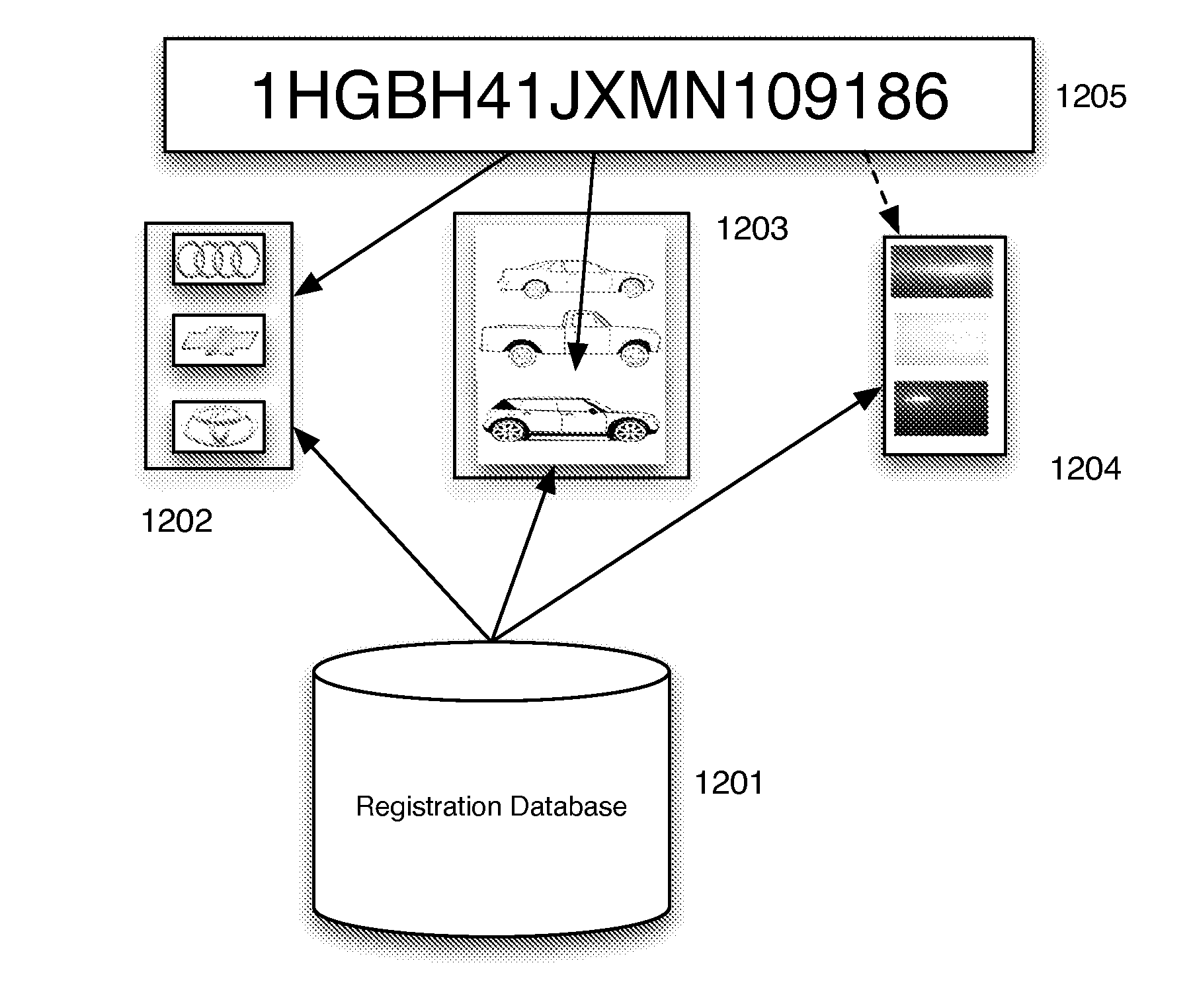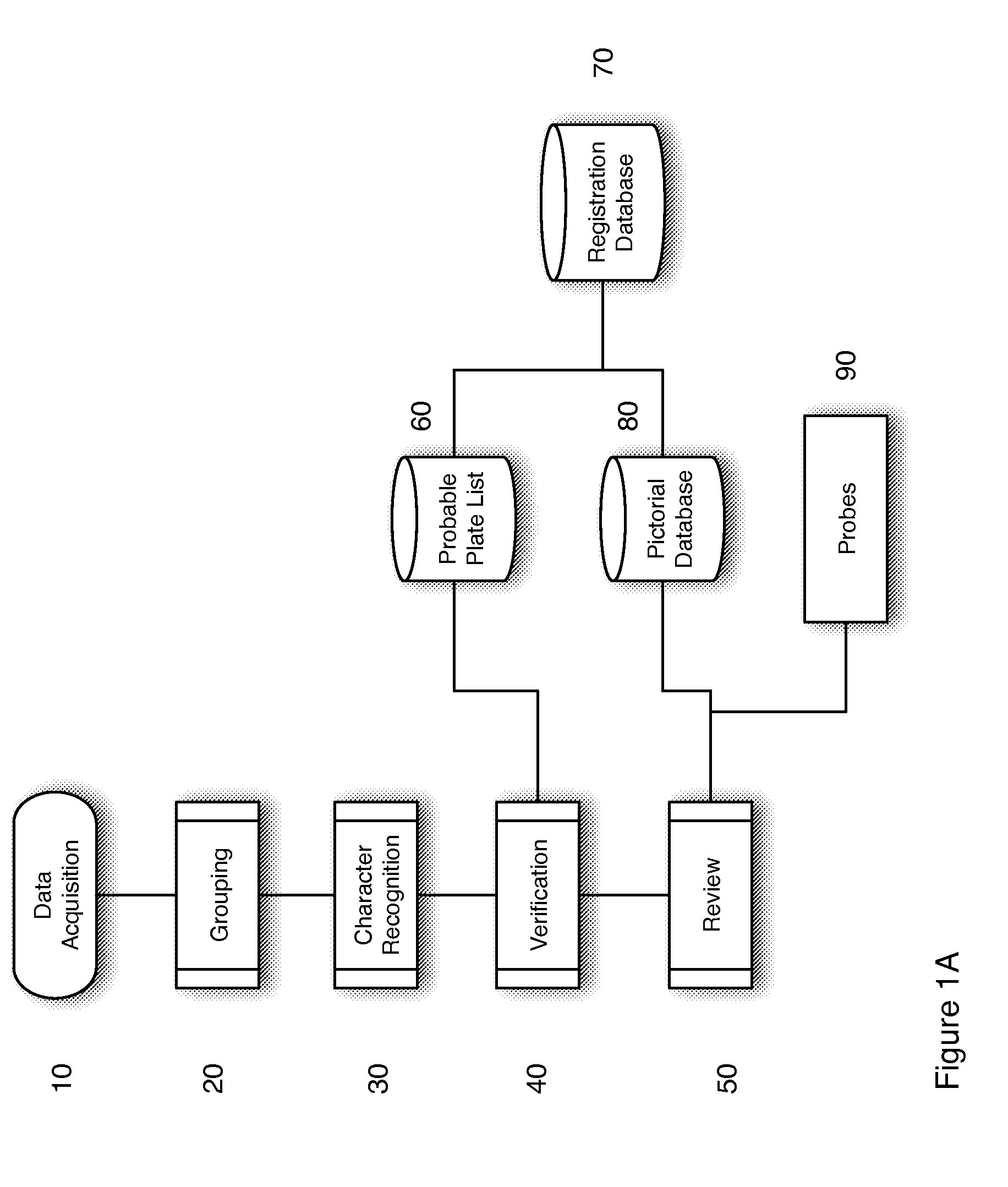License Plate Recognition
a license plate and image recognition technology, applied in the field of license plate image review systems, can solve the problems of lost revenue, significant verification costs, and difficult image amenability to automatic character recognition, and achieve the effect of improving the license plate recognition results
- Summary
- Abstract
- Description
- Claims
- Application Information
AI Technical Summary
Benefits of technology
Problems solved by technology
Method used
Image
Examples
Embodiment Construction
[0038]The invented system includes hardware and processes to allow accurate reading of license plates on a vehicle typically moving at high speeds on a road.
[0039]Referring to FIG. 1A some features of the invented system are shown. The license plate recognition system begins with data acquisition 10. Data acquisition includes obtaining a digital photographic image of the vehicle and its license plate. In the preferred embodiment the image includes both front and rear views of the vehicle with sufficiently detailed image resolution of the license plate and vehicle region(s) to allow for visual identification of the make or manufacturer of the vehicle, the type of vehicle, the model of the vehicle, the coloration of the vehicle. In the preferred embodiment multiple images of the same vehicle are acquired at separate tolling locations or at the same tolling station at different points in time and the detailed regions in the acquired images allow determination that the same vehicle appe...
PUM
 Login to View More
Login to View More Abstract
Description
Claims
Application Information
 Login to View More
Login to View More - R&D
- Intellectual Property
- Life Sciences
- Materials
- Tech Scout
- Unparalleled Data Quality
- Higher Quality Content
- 60% Fewer Hallucinations
Browse by: Latest US Patents, China's latest patents, Technical Efficacy Thesaurus, Application Domain, Technology Topic, Popular Technical Reports.
© 2025 PatSnap. All rights reserved.Legal|Privacy policy|Modern Slavery Act Transparency Statement|Sitemap|About US| Contact US: help@patsnap.com



